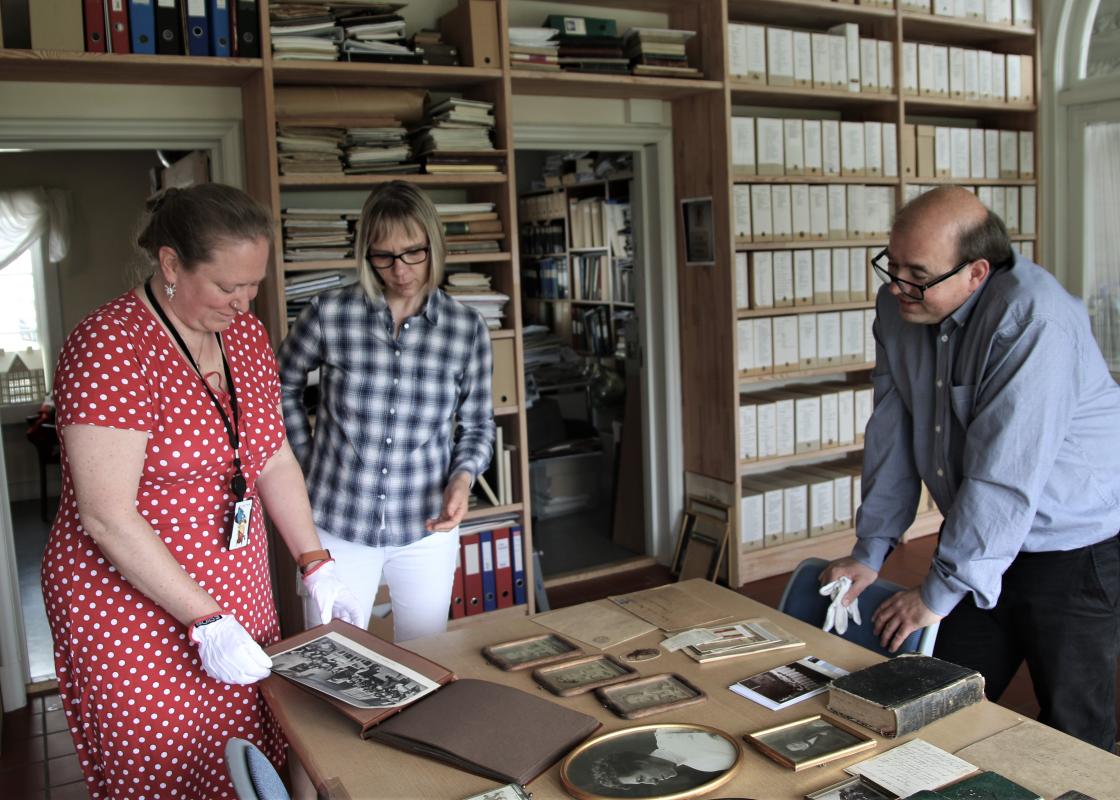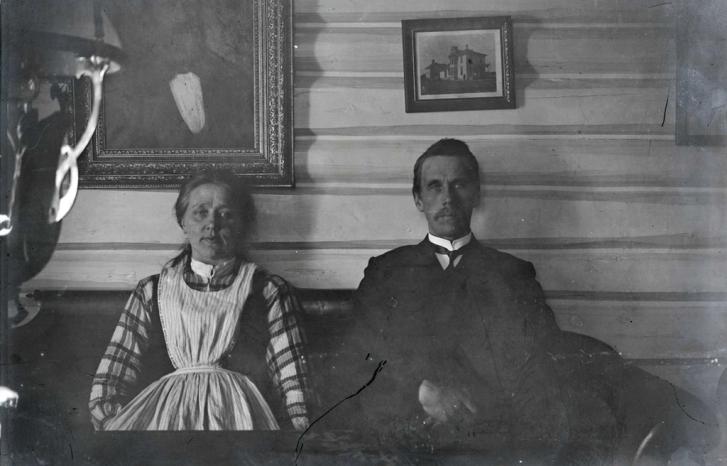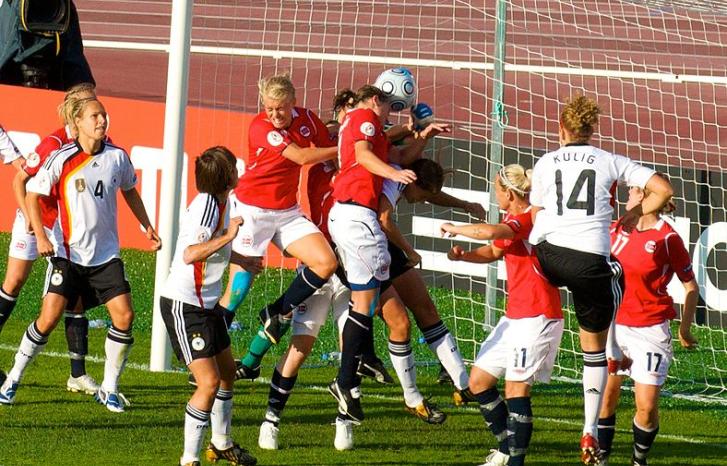‘The hairs on the back of my neck stood up and it struck a chord with me. I knew right away that this was something special.”
Juliane Derry, conservator at the Østfold Museums, describes opening an old, brown leather suitcase that she found in one of the museum's storage areas.
"The Fencing Lady"
The suitcase had belonged to Johanne Sofie Wiel-Hansen, later known as Janken. She was born in Halden in 1868 but lived most of her life in Stockholm, where she died in 1938.
“The suitcase contained several photos of Janken, including one where she is sitting in a rowing boat wearing a life jacket. The photos show a person with a lot of charisma,” says Derry.
Every single item in the suitcase had a story to tell, rousing both an emotional and intellectual curiosity.
We are sitting in the kitchen in the museum’s Rød Herregård (Rød Manor), which also doubles as a meeting room for the employees at Østfold Museums' department Halden Historical Collections.
Senior consultant Bodil Andersson, archivist and first conservator James Ronald Archer and conservator Juliane Derry talk about their work in connection with "The Fencing Lady” and the museum's contribution to the project "The value of the sexes in a museum hierarchy", led by Women’s Museum Norway and the Anno museums.
“I myself live in a same-sex marriage and knew right away that the woman I saw in the picture was probably a lesbian,” Derry explains.
“I thought the same thing, but I was reluctant to say it out loud,” says Andersson.
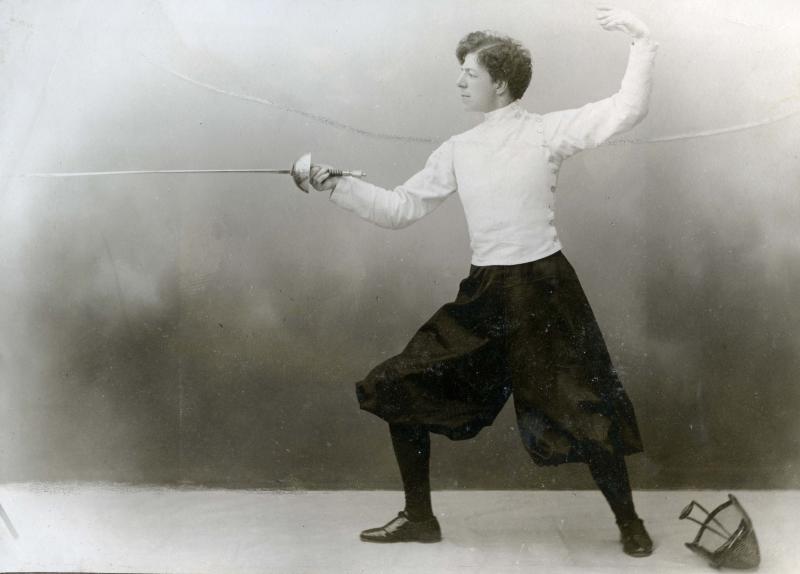
A mysterious Olympic medal
It all began in 2019 when ten thousand objects were to be moved from a storage area at the fortress in Halden to a more suitable storage area in Tistedal. Everything had to be recorded, photographed and re-catalogued. Janken's suitcase was found at the very end of the process, dusty and anonymous in a corner.
Andersson and Archer describe the discovery of the leather case as rare and extraordinary.
“The suitcase contained objects relating to a life well lived, a family circle, and to people both nationally and internationally who were part of it,” says Archer.
It was labelled "W-H. resgods Stockholm" and contained items such as a wallet, fencing medals from 1917, a medal from the Paris Olympics in 1924, various photos, a rosary, a cross, pastille, cigarette and powder boxes, a clock, and a photo album that was also a musical box.
“Every single item in the suitcase had such stories to tell, rousing both an emotional and intellectual curiosity. You could see the contours of an exciting life,” says Andersson.
“We believe that Janken won medals in various fencing competitions, but we know for sure that she did not compete in Paris in 1924, so the Olympic medal is still a mystery. Janken's mother was a Catholic, so the cross and the rosary probably come from her.”
SEE ALSO: Ancient objects shed new light on women's role in viking raids
One of the first women working in publishing
Janken was born in Halden, then known as Fredrikshald, in 1868. Her father, Wilhelm Hansen, belonged to one of the town's most well-to-do merchant families, which sold and exported timber. Her mother Catharina Josepha Steigerwald was from Aschaffenburg in Bavaria.
“The two met while Janken's father was studying to become a forester in Aschaffenburg,” says Archer.
“They married, moved to Fredrikshald and had three children: Janken, Anni and Wilhelm. During the first few years they moved back and forth between Norway and Sweden, but eventually settled down in Stockholm.”
Her father died at an early age and her sister died in an accident soon afterwards. Janken was in her twenties at the time. Her mother and brother decided to move from Stockholm, but Janken stayed behind.
"Janken was a person who made some unusual choices in order to live her life the way that she wanted to."
“At that time, it was unusual for a young woman to live alone. She also worked in a publishing house and was one of the first women in the industry,” says Andersson.
“We haven't been able to find out whether Janken took the job out of necessity or because she wanted to work, but everything indicates that she was someone who enjoyed being active.”
"A straightforward and daring woman”
Andersson has made an information film about Janken and wrote the article "Den fäktande damen. En resväska och en historia om queerhet” (The Fencing Lady. A suitcase and a story about queerness)in the latest edition of the Norwegian museum journal Norsk museumstidsskrift. The museum is also planning a teaching programme for school pupils based on Janken's suitcase.
“Janken was a person who made some unusual choices in order to live her life the way that she wanted to,” says Andersson.
“Those who knew her described her as quick, resilient and short-haired. A straightforward and daring woman with some masculine attributes.”
“For example, Janken was very interested in sport and she cycled, skated and fenced, which was not common for women at the time,” says Andersson.
“Women were meant to have round, soft forms and weren't supposed to exert themselves or sweat. It was believed this could prevent them from becoming pregnant.”
Andersson explains that sport as we know it today was invented at the end of the 19th century when the first sports associations were established. Janken was a pioneer in this area too, she emphasises. A number of photos from the suitcase show Janken wearing fencing gear and she was also active in various associations.
“Among other things, Janken started a fencing club for women in Stockholm, one of Sweden's first sports associations for women,” she says.
“She was probably someone who wasn't afraid to stand out from the crowd. She didn't hide herself away. The photographs bear witness to a person who enjoyed acting, was physically active and who enjoyed posing.”
As well as sitting on the board of the fencing club, Janken also taught fencing, explains Andersson.
“She was also a member of Sällskapet Nya Idun, a discussion association for women established in Stockholm in 1885, as well as the women's organisation Fredrika Bremer.”
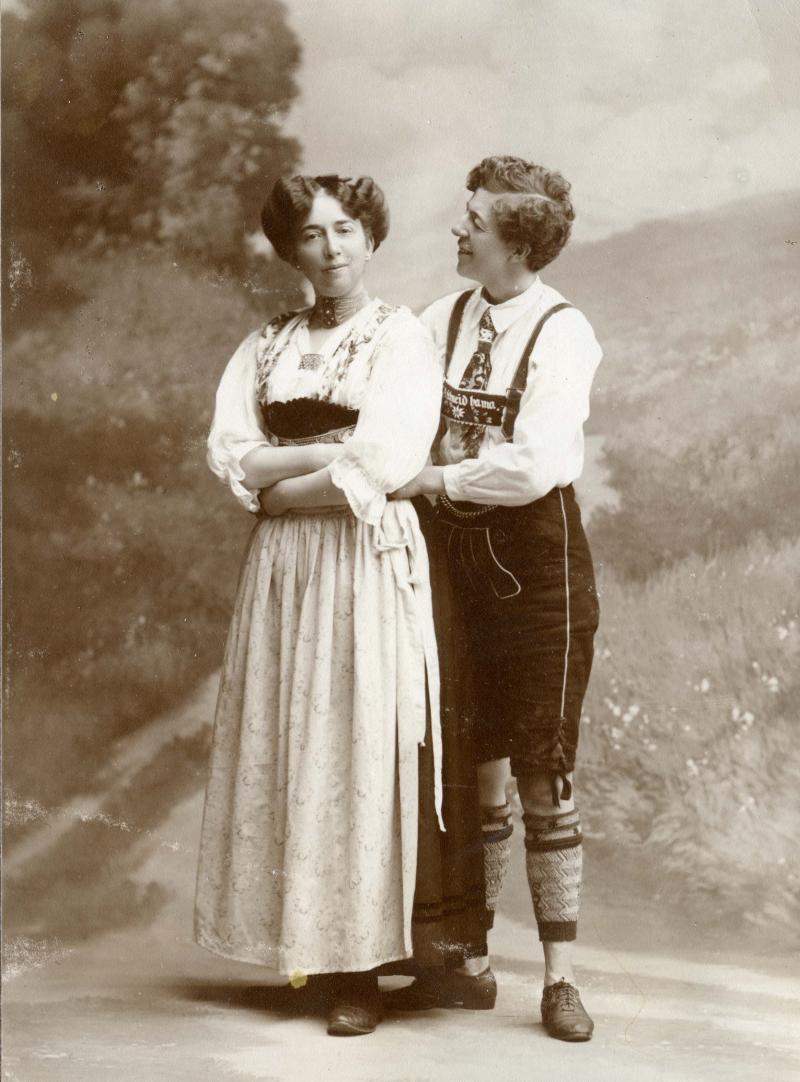
Janken and Plom
For many years, Janken had a close relationship with another woman, Ida von Plomgren, also known as Plom. One of the photographs shows the two of them together as a couple, probably during a trip to Janken's relatives in Germany. Plom is dressed in women's clothes and Janken in men's clothes.
“We don't know if they were lovers, but they appear to be a couple in the photos. They shared many interests, travelled together and lived at the same address,” explains Andersson.
"When you're talking about a person who is no longer alive and where there are no living witnesses, it is important to stick to the facts"
“We haven't found any letters or diaries in which they wrote that they loved each other, but an acquaintance of Plom wrote in a letter that Plom only had eyes for Janken. When Janken died, Plom inherited everything she owned.”
In Janken's time, it was widely accepted and relatively common for unmarried women to live together and share the housekeeping- But even though there are many signs that Janken and Plom were lovers, it is still ethically questionable to draw this conclusion,” Andersson believes.
“When you're talking about a person who is no longer alive and where there are no living witnesses, it is important to stick to the facts, even if you believe something very strongly.”
This article was first published in Norwegian, and was translated by Allegro language services.
This article is part of Kilden kjønnforskning.no's contribution to the project The value of the sexes in a museum hierarchy: About representation of women, sexes and diversity in museums.
The project will be carried out by the National Museum Network for Women's History and is led by Women's Museum Norway. The aim is to change museums' practice and their way of thinking when it comes to gender. The work is based on experiences from the project: "Nå begynner ‘a med det der igjen» – om kjønnsrepresentasjon i museenes samlings- og formidlingspraksiser (There She Goes Again: A Project on Gender Representation in Norwegian Museums’ Collections and Exhibition Practices) (in Norwegian).
Kilden is following up the project with a series of articles, in which we write about gender perspectives in the museums' activities. We will write about the exhibitions, outreach activities and research in the project, and interview researchers with knowledge in the field. The articles aim to shed light on the relationship between gender and museums.
The project is supported by Arts Council Norway.
